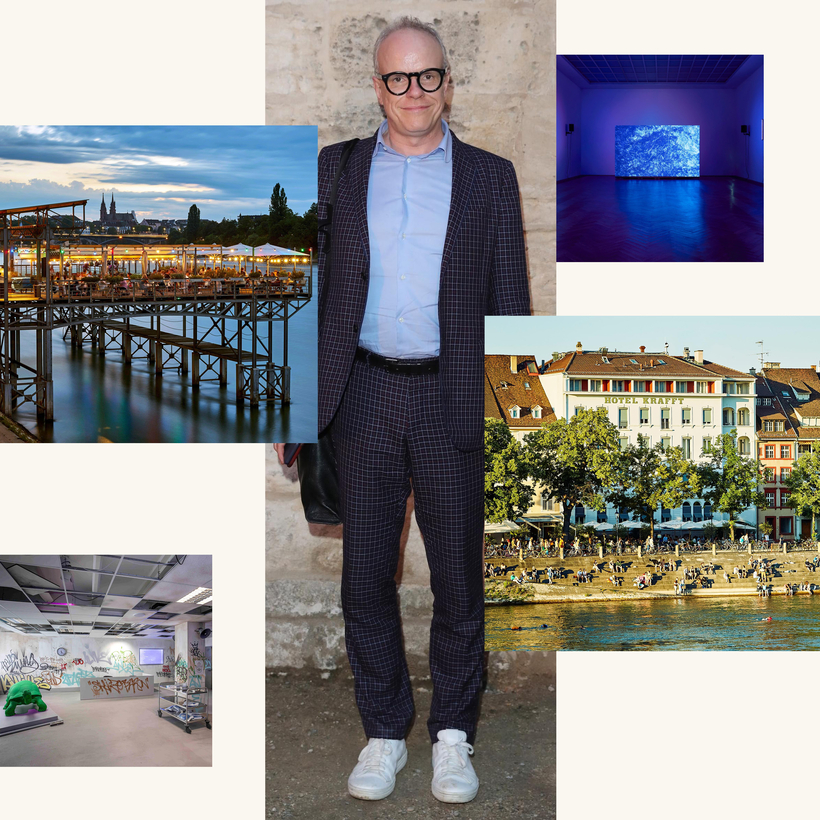Hans Ulrich Obrist has quite the reputation in the art world. He’s been dubbed “the curator who never sleeps” and placed first on ArtReview’s Power 100 list twice. Most things you read about him are true—he sleeps from midnight to five A.M., and only takes 15-minute naps.
He’s also the artistic director of London’s Serpentine Galleries, the co-editor of the French publication Cahiers d’Art, and the man behind the Interview Project. He came up with the Interview Project in 1997, after an afternoon catch-up with the German conceptual artist Rosemarie Trockel. Together, they discussed visiting some of the art world’s centenarians and nonagenarians and recording their observations. He’s since spent over 2,000 hours interviewing both the famous and the obscure. “Like curating,” he told the White Review in 2012, “[this] is a way of working on memory, a protest against forgetting.”
Though he’s been living in London for nearly two decades, Obrist is Swiss. He grew up in Weinfelden, then moved to St. Gallen for college. There, he mounted his first exhibition in his apartment kitchen in 1991, the year he turned 23, which he aptly named “The Kitchen Show.” Here, the art world fixture shares his guide to Basel.
Art Basel
Switzerland transforms into a vibrant art showcase every June. The fair, along with its Conversations program, brings together a diverse array of voices and perspectives. I’ve been fortunate to participate in Conversations for over 20 years, both in Basel and other locations where the fair is held.
This year, we have an exciting program that includes speakers like the architect Carlo Ratti, the artist Danielle Brathwaite-Shirley, and many more artists and thinkers, centering around the themes of technology and utopia. A series of talks, called Exploring A.I., will connect with our Serpentine Arts Technologies initiatives. (artbasel)

The Kulturstiftung H. Geiger Foundation
This new foundation is housed in a beautifully renovated industrial space by the architecture firm Christ & Gantenbein. Led by Raphael Suter, it was conceived as an interdisciplinary organization, and features two or three shows a year. The space adds an exciting new dimension to Basel’s cultural landscape. (kbhg)
Helvetia B1 rooftop bistro
The B1 rooftop bar is located in the western tower of Helvetia Campus, which was designed by Herzog & de Meuron, and offers the most amazing views over the city. The duo were the first architects I met when I was a teenager growing up in Switzerland, marking the beginning of my engagement with architecture. Notably, they designed the Serpentine Pavilion in 2012 with Ai Weiwei. The bar also features a light installation by the artist James Turrell. (b1-rooftop)
Kunstmuseum Basel
This has always been a magical place for me. The first thing I do when I arrive in Basel is visit the museum’s first floor to see the collection of Old Masters. (kunstmuseum)
Basel Social Club
I love it here, and during the fair, it becomes a very energized space. This year, the installation artist Hannah Weinberger is co-curating the program. The club brings together food and art beautifully.(baselsocialclub)
Fondation Beyeler
This is one of the world’s most exciting museums run by Sam Keller. He kindly invited me to co-curate the current show, “Dance with Daemons,” with concepts by Isabela Mora and other participants, including Precious Okoyomon, Sam Keller, Mouna Mekouar, Philippe Parreno, Adrián Villar Rojas, Claude Monet, Cyprien Gaillard, Arthur Jafa, and Tino Seghal, among many other artists. (fondationbeyeler)

Rheinbad-Breite
This is Basel’s most beautiful terrace overlooking the Rhine—perfect for swimming and eating. (lerhinbleu)
Confiserie graf
Among its many offerings, this patisserie serves tree-trunks made with marzipan. No one can resist stopping in during the fair. (confiseriecafegraf)
Burgunder
This shop, which is run by Simon Burgunder, sells semi-professional outdoor gear. Everything is designed and produced in his small atelier in Basel, and all items are very environmentally-focused. (burgunder)
Reading Society Basel
Founded in 1787, this is an ideal place for leisure and reading, and is one of my favorites. It provides fantastic access to literature around coffee and good conversation. (readingsociety)
Klaudia Schifferle at Galerie Mueller & Weiss Falk
Klaudia Schifferle is a pioneering artist from the 1980s—a part of Fischli Weiss’s generation—who also was famous for her 80s band, Kleenex, which was legendary in the U.K. Her work will be exhibited across both of the gallery’s spaces. (weissfalk)

Hotel krafft
This is my favorite place to stay, and could be described as a literary hotel. It also has the most beautiful views over the river Rhine. (krafftbasel)
Villa Preiswerk
This stunning house in Basel was transformed by Michelle Nicol and Rudolf Schürmann. It houses Poeticwalls, an online editorial platform which shows innovative projects, serving as a catalyst of excellent architecture.

Kunsthalle
This great and very interesting institution was established in 1872, and is now run by the young curator and director Mohamed Almusibli. It’s a real laboratory for artists. (kunsthalle)
You can explore our complete, constantly-updated guide to Basel here
